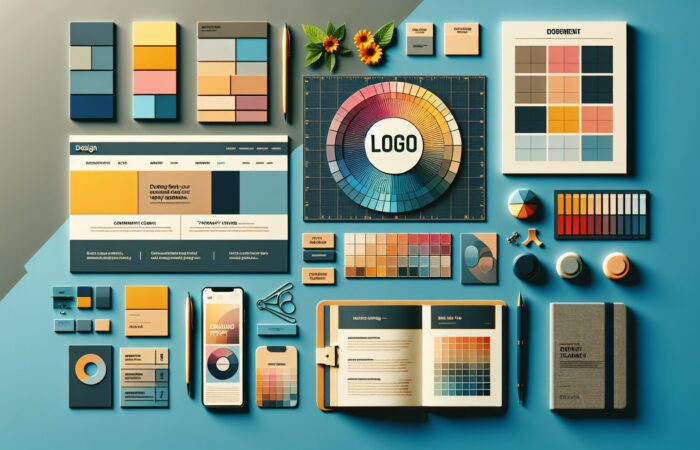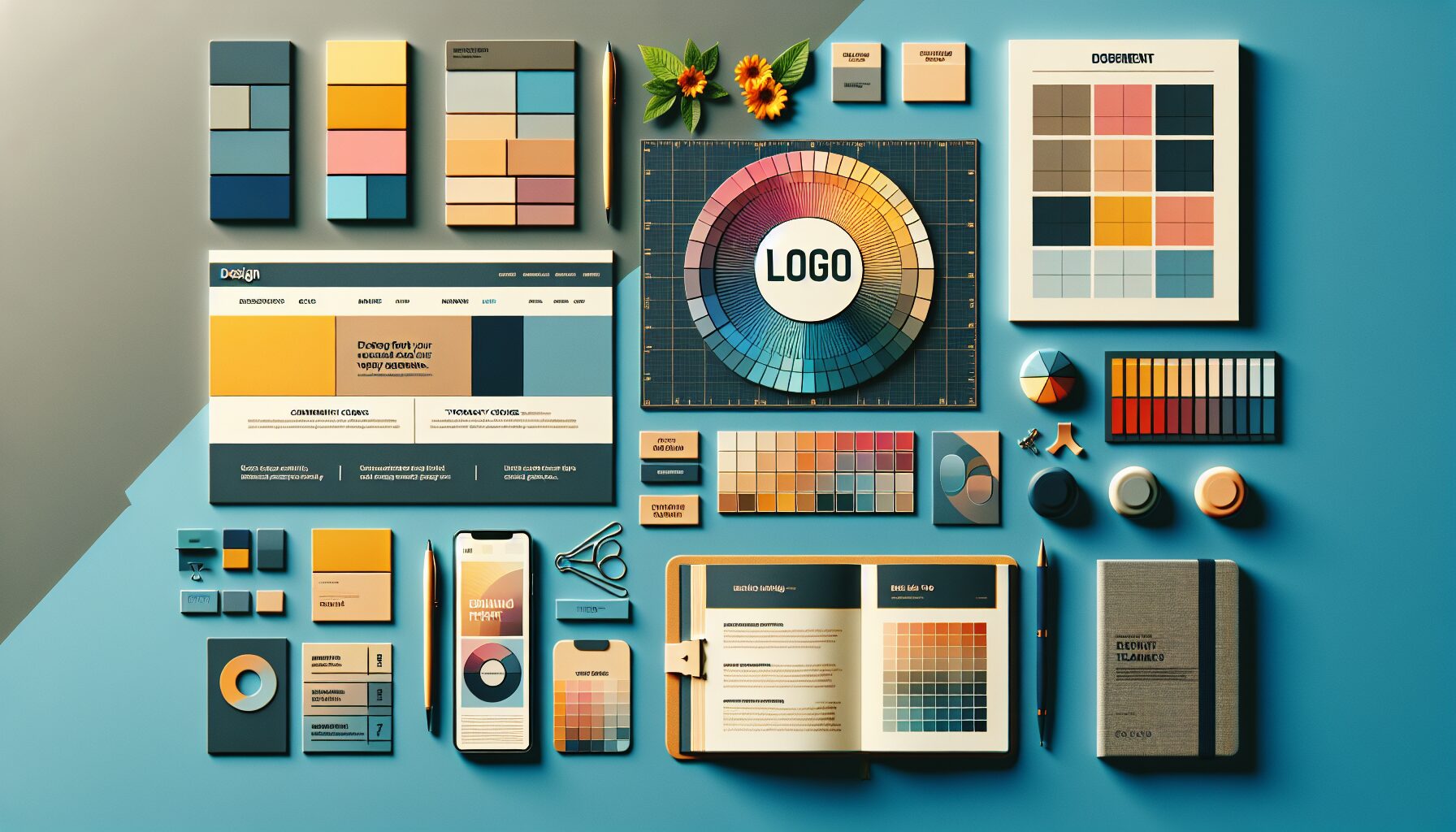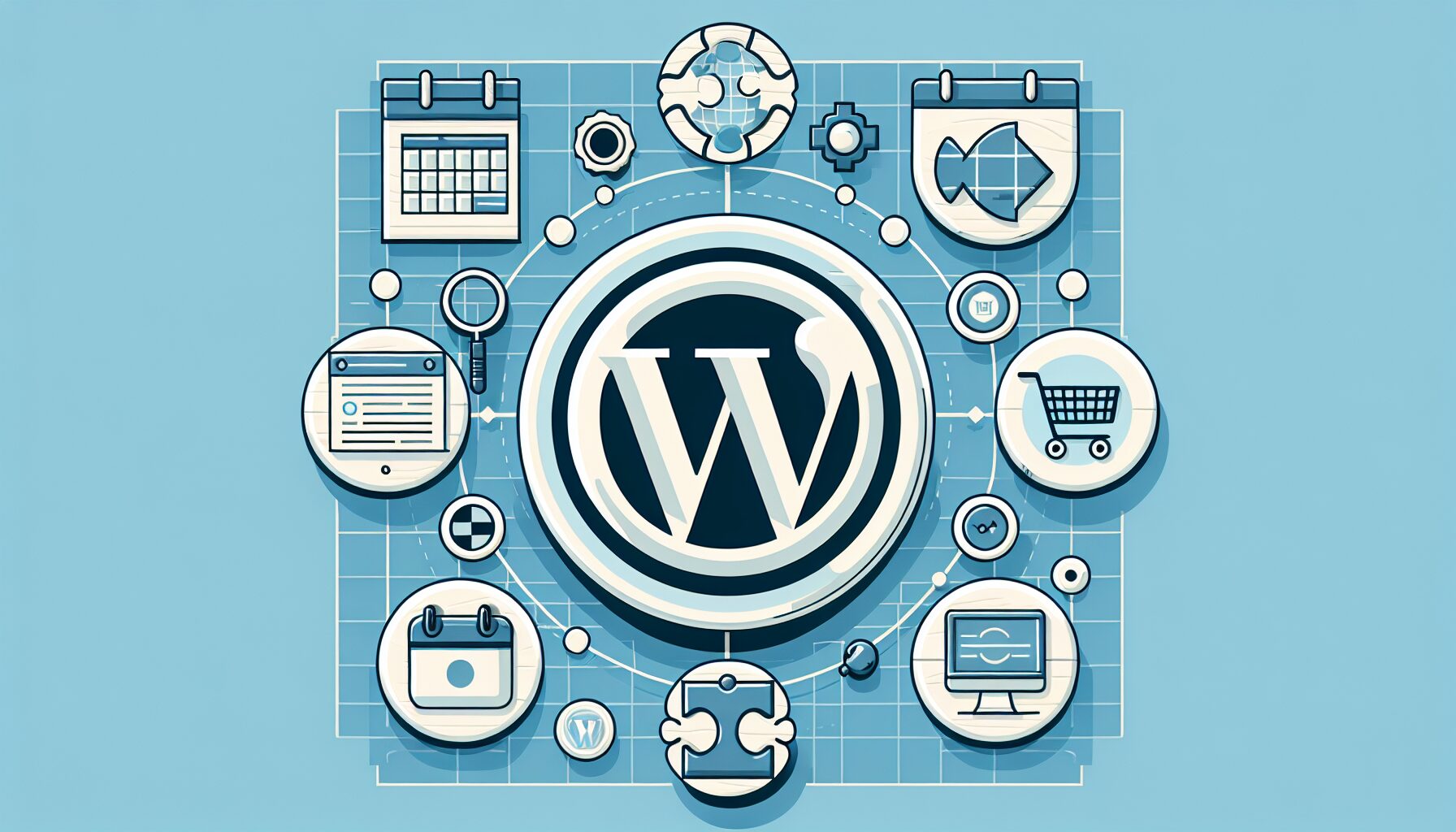Understanding the Importance of Theme Customization for Brand Identity
When you’re setting up your company’s website, you might be tempted to quickly pick a stock theme and start uploading content. But hold on a minute! Theme customization is a critical step that can make a world of difference to your brand’s identity and recognition. Let’s discover why it’s vital to spend that extra time tweaking your website’s look.
Why is Theme Customization Crucial?
Theme customization is more than just aesthetics. It’s about making your website truly represent your brand and its values. It’s the digital equivalent of your store’s interior design, the clothes you wear, or the way you decorate your home. It tells a story about who you are as a company. A well-customized theme sets the tone for customer interaction, and gives a sense of what it’s like to do business with you.
- Consistency: A customized theme promotes brand consistency. Consistent branding across all channels increases revenue by 23% on average.
- Differentiation: A unique theme sets you apart from competitors. It helps you stand out in an overcrowded digital space.
- Engagement: A visually appealing theme can significantly enhance user engagement. A site that’s pleasing to the eye can keep visitors browsing longer, increasing the likelihood of conversion.
How Theme Customization Affects Brand Identity
Think about some of your favorite brands. What comes to mind? More than likely, it’s a blend of their logo, colors, tone of voice, and overall aesthetic – in other words, their brand identity.
Every interaction a customer has with your brand, whether it’s on your website, social media, or in a physical store, contributes to their perception of your brand identity. A well-customized theme helps ensure that your brand identity is consistent and memorable, no matter where or how customers interact with you.
Getting Professional Help with Theme Customization
You don’t have to be a design whiz to customize your website theme. There are plenty of resources available to help, from user-friendly website builders to professional web designers. If design isn’t your strong suit, it’s worth investing in professional help. A great designer can create a theme that doesn’t just look good, but also supports your business goals and enhances your brand identity.
In conclusion, theme customization is a critical aspect of building your online brand identity. So, take your time to get it right. Remember, your website is often the first interaction a customer has with your brand. Make sure it’s an accurate and appealing reflection of who you are and what you stand for.
Identifying Your Brand’s Core Elements: Colors, Fonts, and Imagery
When it comes to building a brand, understanding the importance of your core elements – namely colors, fonts, and imagery – is the key. These are the fundamental aspects that make your brand instantly recognizable and distinct from others.
Colors
Colors carry an emotional weight and can heavily influence how your brand is perceived. Think of McDonald’s red and yellow, or Facebook’s blue; these colors are instantly recognizable and associated with their respective brands. It’s important to choose colors that reflect your brand’s personality and values. If your brand is bold and energetic, bright and vibrant colors may be a good choice. Conversely, if your brand is more about elegance and sophistication, more muted or neutral colors might be more suitable.
Fonts
Just as crucial as the color palette is the font selection. Fonts can communicate a lot about your brand’s personality. A playful, rounded font might be perfect for a children’s brand, while a sleek, minimalist font could convey a more modern, upscale brand. Be sure to select fonts that are legible and complementary to your brand’s aesthetic. Remember, consistency is key – try to limit yourself to two or three fonts.
Imagery
The next core element is the imagery your brand uses. This includes photos, illustrations, icons, and any graphics that would appear on your website, social media, or marketing materials. Choosing imagery that is aligned with your brand helps to create a cohesive visual narrative. For example, a travel brand might use vibrant and breathtaking landscapes, while a technology company might opt for sleek product shots and futuristic graphics.
Remember, your imagery should be of high quality and reflect the overall style and tone of your brand. Shoddy, out-of-place images can really disrupt your brand’s perceived value and reputation.
Bringing it All Together
Now that we’ve discussed the importance of colors, fonts, and imagery, it’s time to bring it all together. Keep in mind that these elements should be consistently used across all your brand’s touchpoints – from your website and social media platforms to your marketing materials and packaging. This will help to create a cohesive brand identity that is easily recognizable and unique to your business.
Don’t be afraid to experiment and tweak your core elements as you develop your brand. After all, your brand should be a reflection of who you are as a company and how you want to be perceived by your target audience.
Choosing the Right Theme to Match Your Brand’s Voice
Hey there, digital pioneer! Now that you’ve identified your brand’s core colors, fonts, and imagery, we have another thrilling journey to embark on. This time, we are diving into the realm of website themes. We’ll be exploring how you can choose the perfect website theme that resonates with your brand’s voice. Exciting, isn’t it?
Understanding Your Brand’s Voice
Before we start, let’s take a minute to talk about your brand’s voice. It’s the unique personality that shines through your content, communication style, and overall presentation. It’s what makes your brand, well, your brand. Whether you’re quirky, professional, casual, or sophisticated, your brand’s voice should be consistent across all your digital platforms. So, it’s essential to select a theme that matches this voice.
The Hunt for the Perfect Theme
Ready to find that perfect theme? Great! Let’s start by looking at what’s out there. There’s an ocean of options available, from basic free themes to premium ones developed by top-notch designers. Every theme has its distinct style, layout, and features. Your task? Pick the one that echoes your brand’s voice.
- Research: Start by exploring different theme libraries. Websites like WordPress, Shopify, and Wix have vast collections of various themes that cater to multiple industries and brand styles.
- Visualize: As you skim through these themes, visualize how they would look with your brand elements. Can you see your logo fitting nicely in the header? Does the color scheme match your brand colors?
- Test: Most theme libraries allow you to preview themes. Take advantage of this feature to see how your content would look in various themes.
Authoritative Advice for Theme Selection
Here’s a hot tip from Forbes: “A good theme should be an extension of your brand, not just a placeholder.” This piece of advice emphasizes the importance of your theme and how it should be a natural continuation of your brand identity.
Don’t settle for whatever theme you stumble upon first. Instead, dedicate time to find one that aligns with your brand’s voice. Remember, your website is the digital home for your brand. Treat it with the same care you would when selecting a physical location for your business.
Consider Professional Help
If you find this process overwhelming or you’re unsure about your choice, don’t hesitate to seek professional help. Web designers are experienced navigators of the theme-selection process. They can match your brand’s voice to a suitable theme or even customize a unique one for your brand.
Choosing the right theme for your brand might seem like a daunting task, but it’s an exciting journey of discovery. So, buckle up, and happy hunting!
Top Techniques for Customizing Your Website Theme
Envision your website as a digital canvas. It’s a platform where you can showcase your brand’s uniqueness and charm. You’re an artist, and your task? Well, it’s to paint a vivid picture of your brand through theme customization. Let’s dive right into the top techniques you can use to customize your website theme and bring your brand to life.
CSS Customization
Using CSS (Cascading Style Sheets), you can modify nearly every visual aspect of your website. This includes elements like colors, fonts, spacing, and more. Although it might have a steep learning curve for beginners, the upside is enormous. As an authoritative tip: remember to use a child theme when making changes to your CSS. This ensures your customizations won’t be overwritten when the theme updates.
Utilizing Custom Fonts
Fonts play a significant role in your brand’s personality. Luckily, most themes offer an array of fonts to choose from. But what if you want something more exclusive? That’s where custom fonts come in. Sites such as Google Fonts or Adobe Fonts provide extensive collections where you can find the perfect font to represent your brand. Once you’ve chosen, you can easily integrate it into your website.
Changing Backgrounds and Colors
Color psychology is a powerful tool in branding. Different shades can evoke different emotions and reactions. For instance, red often suggests urgency or passion, while blue can instill a sense of trust. Dig into your brand’s color palette and apply it to your website theme. Remember, consistency is key in branding, and your website should reflect your brand’s colors accurately.
Headers and footers are like your website’s bookends. They offer a chance to make a lasting impression on your visitors. You can include key information, links, or simply get creative with your design. Customizing these parts of your website theme allows you to further infuse your brand into every page.
Adding Custom Widgets
Widgets can significantly enhance your website’s functionality. Whether it’s adding a live chat, a sign-up form, or social media feeds, widgets can provide additional value for your visitors. They’re like the cherries on top of your website sundae, so choose wisely and ensure they align with your brand.
In the end, tailoring your website theme to your brand is a fascinating journey. With these top techniques in your toolbox, you’re well on your way to creating a site that not only looks fantastic but also truly embodies your brand. So, roll up your sleeves and let’s get customizing!
Integrating Brand Elements Seamely Across Your Digital Platforms
In this digital age, having a strong online presence is crucial for your brand’s success. And when it comes to creating a consistent and impactful online presence, it’s all about integrating your brand elements seamlessly across all your digital platforms. But, how exactly do we achieve that?
Here’s a friendly step-by-step guide to doing just that – integrating your brand elements across all your digital platforms:
Consistent Use of Brand Colors and Fonts
When it comes to recognizing a brand, color plays a significant role. It’s one of the first things people notice, and it’s something that can stick in their minds. So, ensure your website, social media platforms, and other digital channels consistently use your brand’s color palette.
Similarly, typography or your brand’s font is equally crucial. It sends a subtle message about your brand’s personality, values, and voice. So, choose a font that aligns with these and use it consistently across all platforms.
Brand Imagery and Visuals
Another important brand element to integrate is your brand imagery. Whether it’s your logo, infographics, or photos, they should all align with your brand’s voice and aesthetic. Maintaining consistency in your visuals helps create a strong brand image and enhances brand recall.
Tone of Voice
Your tone of voice is how your brand communicates with its audience and expresses its personality. A consistent tone of voice across all platforms helps your audience connect with your brand on a deeper level and builds trust.
Social Media Integration
Don’t forget about social media! Having the same brand elements – colors, fonts, imagery, and tone of voice – on your social media platforms can boost your brand recognition significantly. Plus, it allows for a more cohesive and enjoyable user experience.
Use of Brand Messages and Taglines
Last but not least, your brand message or tagline. This is a short, catchy phrase that embodies what your brand stands for. Including this in your digital platforms can help reinforce your brand’s message and identity.
Remember, consistency is key. By integrating your brand elements seamlessly across all digital platforms, you’ll create a strong, recognizable online presence that truly reflects your brand’s identity. And, this is crucial for building trust, loyalty, and engagement with your audience.
So, start integrating now, and see the difference it makes to your brand’s online presence and success!
Utilizing Plugins and Tools for Enhanced Theme Customization
Hey there, web enthusiasts! Let’s delve in and explore the fascinating world of plugins and tools for theme customization. You’re in luck if you’re seeking to give your website a unique look that aligns with your brand. This is where the magic happens!
Why are Plugins and Tools Important?
Before we get to the ‘how’, let’s talk about the ‘why’. Plugins and tools are essential as they add specific features to your website to make it more dynamic and interactive. They are the secret ingredient to help your brand stand out in the digital crowd. Believe me, with the right ones, you can transform your website from ordinary to extraordinary.
Choosing the Right Plugins and Tools
Now, onto the exciting part! There are countless plugins and tools out there, each with its unique features, but here are some universally beneficial ones.
- Elementor: This is a drag-and-drop page builder that allows you to custom-build your website without needing any coding knowledge. It’s easy to use and incredibly versatile.
- Yoast SEO: If you’re keen on optimizing your website for search engines, Yoast SEO is just what you need. It will help you improve your website’s online visibility.
- WooCommerce: For those running e-commerce sites, WooCommerce is a must-have. It lets you set up shop on your site, manage inventory, and process payments easily.
Using the Plugins and Tools
Installing these plugins is easier than you might think. They’re usually installed from the dashboard of your content management system (like WordPress). Once installed, you’ll find a new menu item where you can access the plugin’s features. It’s as simple as pie!
Get Creative
Now that you know how to use these plugins, it’s time to let your creativity flow. Remember, the goal is to align your website’s look with your brand’s identity. So, don’t be afraid to experiment with different layouts, colors, and designs. The world is your oyster!
Final Thoughts
Plugins and tools can significantly enhance the customization of your website theme. They’re an amazing way to incorporate your brand’s personality into your site. But remember, always keep your target audience in mind when making changes. After all, a website is not just about looking good, it’s about creating an enjoyable user experience.
So, go ahead, explore the myriad plugins and tools available, and embark on a journey of creating a website that’s truly reflective of your brand. Happy customizing!
Monitoring and Updating Your Theme to Keep Your Brand Current
Keeping your brand fresh and relevant in the marketplace is not just about providing top-notch products or services. It is also about ensuring that your online presence, particularly your website, continuously reflects your brand’s evolution. Let’s dive into why monitoring and updating your website theme is essential to maintain a current brand, and how you can do it effectively.
Monitor User Experience and Feedback
First things first, keeping an eye on user behavior and feedback is critical. If your site visitors find it difficult to navigate your website or do not find the design appealing, they might not spend much time on your site. Use tools such as Google Analytics to track user behavior metrics like bounce rate and session duration. In addition, encourage customer feedback through surveys or feedback forms on your website. Remember, your website must evolve with the needs and preferences of your audience.
Keep Up with Design Trends
Design trends change rapidly and it’s important to stay updated. A website that looked modern and cutting-edge a few years ago might appear outdated today. Therefore, researching current design trends should be part of your brand’s regular activities. However, don’t get swept away by every new trend. Always choose those that align with your brand identity and resonate with your audience. Think of it as a fashion-forward approach to your digital wardrobe.
Introduce New Features and Functionalities
As your business grows, you might need to introduce new features or functionalities to your website. Perhaps an online booking system, a blog, or a new product category. Whenever you add something new, ensure that it maintains the same look and feel as the rest of your site. Consistency is key and helps to strengthen your brand identity. For this, you might need to tweak your website theme or even consider a complete overhaul if your current theme doesn’t support the new features.
Regularly Update Your Theme
- Security:Regularly updating your theme ensures that you’re protected against any vulnerabilities. This plays a crucial role in creating a safe environment for your users.
- Performance:Updates often include improvements that can make your website faster and more efficient. This can significantly improve your users’ overall experience.
- Compatibility:With the constant updates in platforms, plugins, and browsers, keeping your theme updated ensures that your website remains compatible and functions seamlessly.
Monitoring and updating your website theme may seem daunting, but it’s absolutely necessary for the ongoing success of your digital presence. Just as you would invest time and resources into improving your products or services, the same level of dedication is required for maintaining a current, attractive, and user-friendly website. So, set aside time regularly to check your website health, stay updated with design trends, and make the necessary changes to your theme. Trust me, it’ll be worth it!











No Comment! Be the first one.